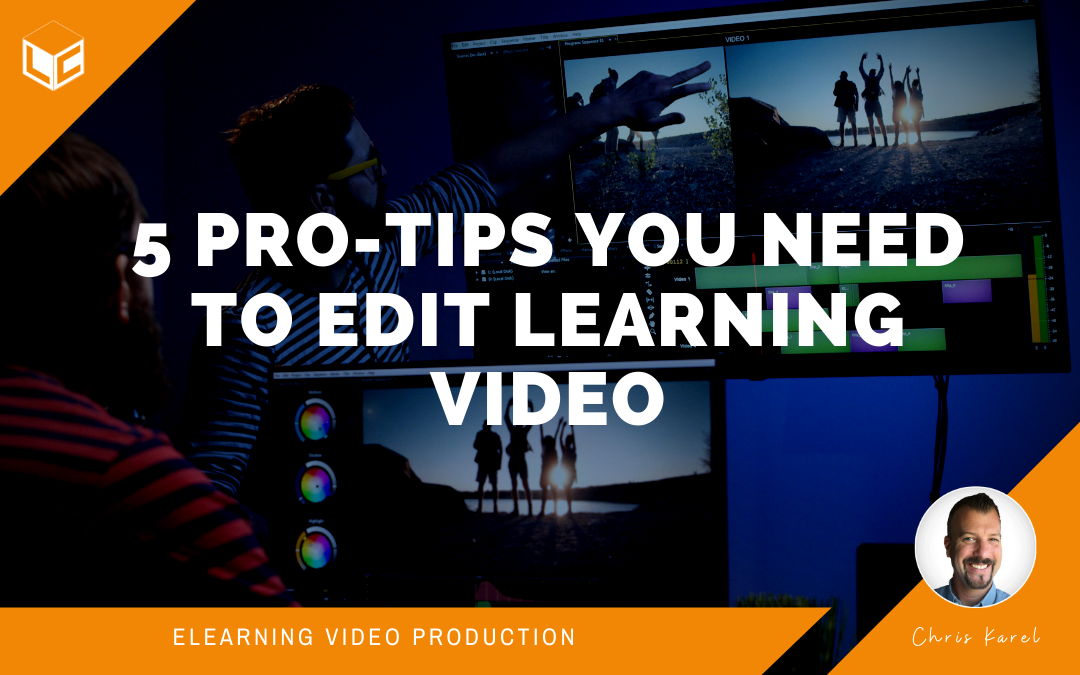I’m on a mission to help people make and use video for learning purposes. To edit a learning video like a professional you need a checklist. Professional editors plan, edit, and share. This post focuses on the five things you need to do during the planning phase of video editing. To be crystal clear (Tom Cruise Top Gun crystal), I’m talking about the planning that an editor needs to do before even opening the editing software. In other words, this post assumes you have conducted a needs analysis, spent time scriptwriting, completed video pre-production, and recorded footage like a professional.
If you fail to plan, you are planning to fail. ~ Mr. Five Dollar Bill aka Benji Franklin
So let’s get to it!
5 Pro-tips You Need to Edit Learning Video
Review the purpose
Before you start dealing with any video clips or footage, you need to remind yourself why you are making the video. Are you raising awareness? Teaching a skill? Demonstrating a process? Keep this in mind so that you can use the appropriate cues in the video to achieve the purpose of the video. For example, if you are trying to teach your learners 5 steps to follow when sending an email, then using text on the screen will be helpful. Creating a recap of the list of steps will also be essential. If you disregard the purpose, you run the risk of creating a sequence with flashy graphics that do not accomplish the purpose of the video.
Follow or create the review process
Establish who will review the video at each stage of the process. I recommend at least two revision cycles before you share it with your learning audience. Below is a segment of my project timeline doc that shows everyone what to expect on a learning video project.

Review your storyboard/script notes
If you worked with a team to make the video or if you made it by yourself, there should be field notes. These are notations made on the script or storyboard during filming. As a producer, I like to mark the timecode of the good takes so it’s easier to find them when editings while ignoring the not-so-good ones.
Have your style tile or guide on hand
Refer to your brand guidelines and or style tile while you build your video. I love a good style tile because it provides everyone with a one to two-page document that defines how everything should look. Here’s an example that demonstrates guidance on typography, logos, colors, texture, iconography, and animation style.

Choose your software
I use and recommend Adobe Premiere. However, if you would prefer to use Screencast-o-matic, Camtasia, DaVinci Resolve, or Final Cut it’s up to you. If the names in the previous sentence read like lorem ipsum, I suggest checking out my guide on the Computer Gear You Need to Make Learning Videos. Whatever tool you choose, remember that it is a tool. It should be easy for you to use to accomplish the purpose of your learning videos while providing you the level of professionalism that is good enough for your audience.
Helpful Links
Critical Thinking and Planning Your Video’s Editing Style
Edit Suite: Plan for Better Editing
Summary
Before you open up any video editing software, follow these pro-tips to plan a successful edit. Putting thought into the edit will save you time and energy. And, it will improve its ability to support your KSB. First, you need to refresh yourself. Remember, you are making a learning video with a specific purpose. Second, decide who the reviewers of the video will be. If you are creating the video on your own, see if you can get a second set of eyes on it. Two revision cycles are ideal. Once that’s decided, the third step is to review your storyboard/script notes. When you were shooting the video, hopefully, you noted the timecode of your favorite takes or anything you wanted to make sure the editor (you) should keep in mind when working on the final cut. Fourth, keep your style tile at the ready – and get a style tile (or guide) if you don’t have one. You’ll need this while editing to make sure everything is branded correctly. Finally, choose which editing software you’ll use. There are a lot out there, but I recommend Adobe Premiere. As long as you know how to use the tool, you’ll end up with a professional video perfect for your audience. Now get to planning!
Join my learning pals
What are your favorite editing tips or problems you frequently have with editing? Share your voice with me.
Join my learning pals. Please subscribe to my newsletter to receive free learning resources delivered to your inbox every two weeks.
THE END


